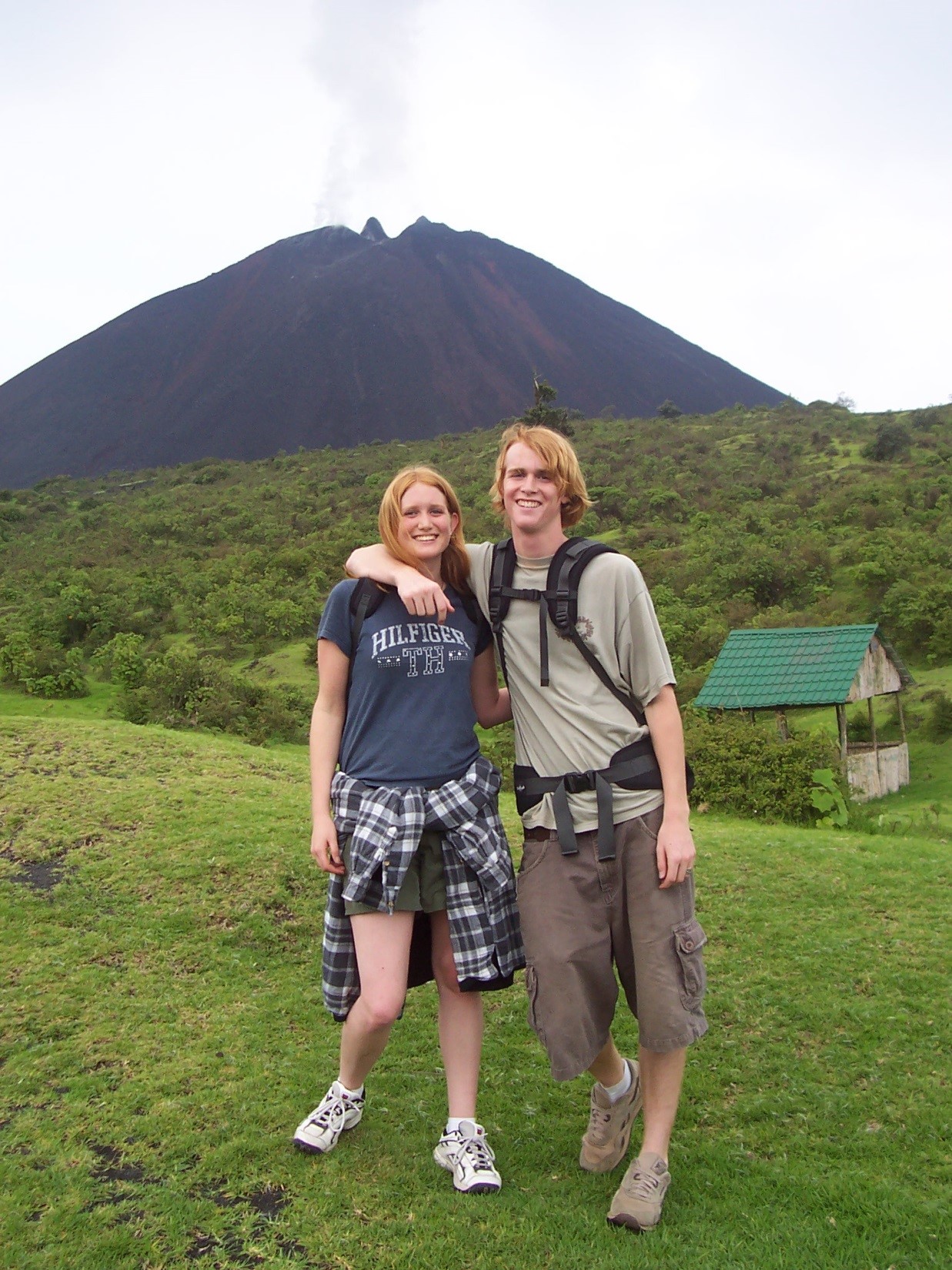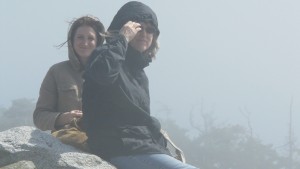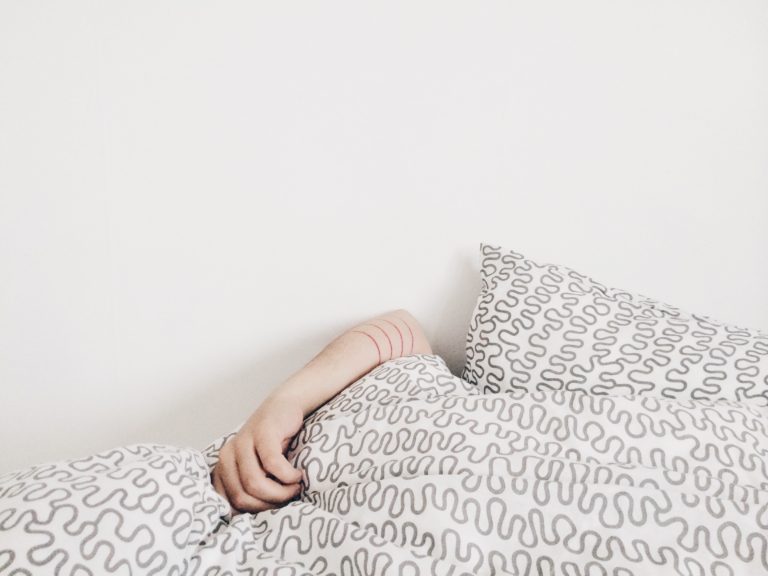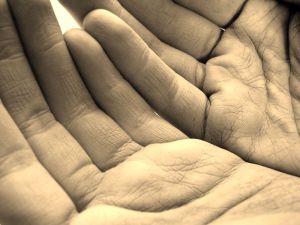No More Secrets! ~ By Erica Kitzman

NO MORE SECRETS!
My father was a child of The Great Depression and, as a young teen, he joined the Navy to learn a trade. He served the entirety of WWII, leaving the Navy as a journeyman electrician with an honorable discharge and a bright future ahead of him. Sadly, at the very end of the war he developed “shell shock” with periods of psychotic depression, which occasionally turned to catatonia. Later in his life my sister and I discovered that if we could convince him to go to the Emergency Room soon enough during onset, the sodium and fluids he received there would reverse or at least halt the progression of an episode. During those years, he was also diagnosed with SIADH. (My daughter had this as well.) As I was able to observe that the physical symptoms always preceded my dads’ psychiatric symptoms, during my life I developed a much more physical view of “mental illness” than the majority of society. As a matter of fact, I do not believe there is any such thing as “mental illness” at all, because unlike other discrete illnesses there are a miniscule number of medical tests available to diagnose maladies that affect 1 of 4 of us in any given year.

My dad and my daughter
In 1964, when I was five years old, my father shot my sister and my grandmother while attempting to murder my mother. Thankfully nobody was killed, and their injuries were nonfatal and not disfiguring. My father was forty-four years old; twenty years past his discharge from the U.S. Navy. Before these shootings, my father had attempted suicide at least once.
I’m grateful that my mother was a devout and educated woman, as she believed we would all be best served if our dad agreed to psychiatric treatment rather than serving a jail term. For the next four years he lived as a patient in a V.A. hospital in Van Nuys. Through a California veteran’s program he was able to serve his “sentence” while working as the facilities electrician and simultaneously having psychiatric treatment and participating in life management groups. I feel so fortunate that his treatment was successful in that he was able to resume a normal life of work, family, and travel. After his four years at the V.A. hospital he was always prone to psychiatric symptoms during times of extreme stress, and we were taught to help in whatever way we could. He left his life at age seventy-seven; the proud grandpa to several adoring grandchildren.
The reason I began this post with this story of my dad is that he served as my role model of “mental health” recovery throughout my life. He was most always compliant with treatment and, I believe because of his Navy training, was generally able to maintain a daily formula for staying well. His V.A. doctor, himself a survivor of the Bataan Death March, told him that hearing/seeing voices/visions was not a problem as long as he didn’t acknowledge or converse with them. For him, that seemed to work. Growing up I somehow came to interpret this advice to mean that if a person was not experiencing voices or visions, then there was no problem. Not being “crazy” was very important to me, as I saw how much he suffered and felt huge compassion for him as a human being. He was my closest parent and, like his grandchildren, I adored him. 
My daughter meditating in the rain atop a Mayan temple in Guatemala
Only since my daughter died of suicide have I discovered that though my dad’s 1960’s bootstraps version of mental health recovery was functional for him, it is not a workable method for most who suffer with severe depressive symptoms. As a matter of fact, the ideal of independence is not conducive to living a healthy life in general, and many studies have borne out the truth that we humans are meant to be supportively interdependent with one another.
I don’t know precisely when I learned the whole story of my dad’s day of attempted suicide and homicide, though I suspect my one of my sisters might have told me when I was around nine. That is the time I remember being aware of my various sisters’ emotional stresses. By then, one sister had attempted suicide at least once, one had married a violent man with severe alcoholism, and one had developed a heroin addiction during her teens. In time I developed my own struggles with drug and alcohol misuse, though by the time I turned twenty-one I was determined to recover my sense of self. I can say that I have gotten much better over the past 33 years, yet though I choose not to drink or drug, I still do not feel completely recovered.
Even though I had been in recovery since age twenty-one, by age twenty-eight I experienced suicidal thinking after moving a thousand miles from my nearest friend. It was brief, and I was confused and afraid for my children to lose their mother. I doubled my recovery efforts, via church and 12-step meetings, and as a result I felt very well for several years.
Five years later though, in late 1992, after more moves across the country to follow my husband up the corporate ladder, I experienced an abrupt suicidal impulse while driving with my children in the vehicle. I was terrified that I could have injured or killed my own children. I pulled the car over to the side of the road, called their father to come home from work, and checked into the nearest psychiatric hospital. I stayed there for three weeks with nobody ever figuring out what caused the abrupt suicidal episode, nor did anyone give me any useful information as to how to prevent a future episode. Now it is 2014, and my government has JUST NOW made suicide prevention research a national priority. Why now?
Why did my government know that suicide was among the ten most frequent causes of death in America, yet took 12 more years to make suicide research a priority? Why did my family persist in “pulling ourselves up by our bootstraps”? Why are people, who are suffering with psychiatric distress, still routinely transported in police cars wearing handcuffs as often as in an ambulance? Why handcuffs and/or shackles, when physicians know that the vast majority of such patients are absolutely no danger to the transporter, other patients, or the patient themselves, and that punitive transportation and care cause more trauma and exacerbate distressing symptoms?
The first and most obvious answer I can come up with is that bigotry against people who experience psychiatric symptoms outweighs common sense; that societal stigma weighs heavier than reason. The second is that America is a country of rugged individuals who are not known for asking for other’s assistance, and our health systems have not chosen to look to other nations who are light-years ahead of us in solid recovery statistics. However if we are honest with ourselves, I believe most will agree that people who attempt or die of suicide are simply seen as weak willed, cowardly, “less than”, and unworthy of compassion, so why should we try to save them. 
Kaylan and her brother preparing to climb that smoking volcano behind them
I read the words Medical Examiner on my caller ID, and I knew before I answered that my child had died. I knew my precious, sensitive, wonderful daughter had been depressed, though she had assured me that she was not dangerously depressed. I had asked if she was so depressed that I needed to worry and she told me no… too late I learned about QPR. Too late I learned the correct way to ask in a way to get an honest answer, and how to give lifesaving emotional support.
I knew that she had lost her long wished for baby six months before; yet it hadn’t occurred to me that she may be suffering from postpartum depression as I had with her and her brother. I knew that she had broken up with her boyfriend and had begun dating another sweet and talented man; moved to a small room in an apartment where she had to sleep with her cat in her room. I knew that she was drinking too much, because she had smelled heavily of alcohol four days before she died, when we attended a Picasso exhibit together with my friend. I knew she had gotten a DUI and was terribly humiliated by it; enough that she begged my secrecy. Even with all of this, having tried to teach my children the importance of managing stress… I had utterly missed the fact that she was running on empty in every area of her life; health, family, work, social life, living situation. I’d mistaken her deathly tone in our last conversation for exhaustion, because when I asked if she needed to talk, she said no… that she was just very tired. Then I missed her last call. I failed my child. No matter who says the opposite, and no matter how many times they say it, this is how I feel. I failed my daughter and she died as a result.
My heart-soul-mind-being was butchered as the M.E. gently began to tell me of her death… asking in quiet tones if I knew she’d been depressed… her full name, height, hair, tattoos… When I answered the phone I was standing up. When I hung up I was flat on the floor with my husband, screaming and crying and then shivering cold and quiet. I called back later. Was he sure? Could it be a mistake? No. They were certain. I called back two days later, on the way to make arrangements at the funeral home, because I didn’t even know if she had died late one night or early the next day. I couldn’t think. Everything was surreal; even breathing. My first pure love was gone from my life and my brain was trying earnestly to find a way to make that fact a lie.
Watching bald eagles feed beside the same small ancient bay where 32 months later I would scatter Kaylan’s ashes
By this time she had been living with periods of obsessive thinking and severe depression for 14 years, with onset after a summer of strep infections and her father’s first round of chemo. For some bizarre reason her pediatrician never chose to give me medical information about OCD or depression. When she was hospitalized at 13 for self harm, the discharge instructions made no mention of her then increased risk of suicide attempts? WHY?! When her brother was treated in the ER for a broken clavicle at the same age, I was given 5 pages of instructions AND a nurse followed up later in the week. Why all the secrecy?!
In my living room during the week between my daughter’s death and the funeral, with our children, most siblings, and many nieces and nephews present, my sister demanded that we promise to never keep another life threatening secret from one another. She made us promise. No More Secrets! That’s our promise to each other. It has become my promise to the world.
Kaylan and I had discussed obituaries in the weeks before her death. Her aunt & great-grandmother read obituaries as well, so the fact that she read them did not alert me to danger. She said that obituaries would be ever so much more interesting if the manner of death was reported, and I said “ewwww” as always. Less than three weeks later, when her funeral director asked to where donations should be made, I answered NAMI without hesitation. I am still sick to vomiting as I type this blog… sick that my daughter is dead because we didn’t know how to talk honestly and supportively about something as common as suicidal thinking. Sick that she told her friends and they did hadn’t been taught how to save her either. Sick that 20-25% of us will experience suicidal ideation in any given year, and that help is not available in every single doctor’s office and public health office in the USA! BTW, ideation = thinking. Why don’t they just say suicidal thinking so we all know what the clinicians are talking about? Why isn’t this information taught to every school child?
My girl was a natural musician and composer, and she was an avid supporter of the Seattle-Fremont music scene. Her friends began to talk about a benefit concert almost immediately after her funeral. My husband and I had taken off in our truck across the southwest, chased by a blinding grief too raw to face. As we were driving, her friends, “the kids” were calling with all kinds of questions such regarding what to say and whom to say it to… Should they speak to reporters? Should they use Kaylan’s full name on posters? How could they honor her without glorifying her death?… they didn’t want to make things worse… to make more people die. Seattleites are well versed in the knowledge that suicide attempts and suicide deaths decreased after Curt Kobain died, and that is because his wife was vehement in her public declarations that suicide was not cool and people should not attempt suicide. So, because I’m that mom who believes knowledge helps, I started to read books on suicide. I read nine of the top ten current books on suicide that were suggested to me by a librarian in the town we’d fled.
The benefit concert was a community success, though nobody felt accomplished afterward. We were all still wrecked. But thank God nobody died as a result of the concert publicity. The Seattle magazine editor got hold of the information and asked one of her reporters to write a story about Kaylan’s situation. It was not nostalgic or pretty, however it was honest and responsible. If only all journalists would adhere to the suggestions for responsible reporting on suicide attempts and suicide deaths.
After the concert to benefit NAMI Greater Seattle, I began the second phase of my unraveling. After the concert was over that I had my most recent experience with suicidal thinking. I don’t say suffered, because this time was not a flash thought. It was a plan that brought me instant and utter emotional and mental peace. The peace was such an intense relief that I didn’t want to share it with anyone. Though she had showed all the signs of an impending suicide attempt, I had missed them. I’ve recently discovered that some of these signs of impending death are precisely the same no matter what the cause. Many hospice pamphlets and websites point out such signs as finishing up business, wounds failing to heal, wanting to talk to relatives and friends to say goodbye. WHY ISN’T THIS WIDELY AVAILABLE PUBLIC EDUCATION INFORMATION?!
So one day I was swimming laps and out of the blue, I made a plan to die. The plan brought me instant peace and relief from the emotional agony. I kept my secret for an hour or so, and then I remembered. No more secrets. I told my husband. I told my kids. Then I told all of my friends on the phone. Then I told the internet. I have decided to keep speaking out until I die a natural death, because there are too many secrets that are killing too many mothers’ children in this world. 
Climbing
From the minute she could climb Kaylan took comfort in high places. Even as an adult, she often climbed to the highest perch available just to sit and read. Sometimes she had a friend with the same desire to attain vertical height, and they would climb and play together. Though she told her Seattle friends closest to her that she had thought of dying on purpose, I’ll never know if she fell or not. I know her blood alcohol level was 2.9 at time of death, so if she did die on purpose her death was not a cogent choice. That said, keeping secret the desire to die is what killed her, combined with the deliberate lack of available public information on suicidal thinking. This same secret, this silent shame, is killing more people in America than are murdered each year. It is killing the best and the brightest among us, with physicians at the top of the horrifying charts. AIDS kills a fraction of the number of people killed by suicide, and a majority of American teenagers are well versed in how to avoid the HIV virus.
I’ve read, studied, volunteered, taught, advocated, talked to the media, organized community events and projects… and still some days I feel deserving of death for failing my child. Suicidal thinking seems to be contagious after a loved one attempts, or dies of, suicide. Those of us who have lost loved ones to suicide are 4X more likely to die of it ourselves. Nobody knows precisely why.
What I do know is that suicidal thinking, like all other acute symptoms of all other treatable illnesses, responds to love and concern and chicken soup just like every other acute health crisis. It is documented that once someone gets pneumonia then that person is prone to pneumonia for their lifetime, and the same is true of heart attacks, strokes, diabetic crises, and psychiatric symptoms. When a person has suicidal thinking as a coping response, they need to be surrounded with support for several days. The support needs to be continued as the person heals, just like the support of a person and family who are struck with a rogue invasive cancer.
I’m going to keep learning and talking and teaching about every single thing that I learn that might help someone who is suffering with suicidal thinking, or to help prevent another mother from losing her own sweet child. I’m going to tell people that mental health recovery systems work, that integrated care works best, that Open Dialogue is eradicating schizophrenia in Finland, that Healing Homes are receiving seriously ill people and sending them back to the world whole, that The Living Room Concept is more effective at hospital diversion than traditional crisis centers, that the American version of mental health care is not the best in the world. We can learn from others. We can do better!
I’ve learned that there is no shame in having psychiatric symptoms and that there is hope to be found via multiple avenues. There are great magazines to purchase for your home and your doctor’s offices such as Esperanza and many others.
Many months after we lost Kaylan we learned how very fortunate we were in our friendships. Our friends opened their homes to our family. They loaned us their cars. They brought huge amounts of food to feed all of us each evening for two weeks. They drove us to appointments. They sent house cleaners. They organized getting flowers to the funeral. They adopted Kaylan’s enormous orange kitten! They prayed for us and with us. They loved us actively as Jesus said to do. Much later did we learn that people who lose loved ones to suicide rarely even hear a gentle acknowledgment of their loss, much less experience the amazing outpouring of love that we were shown. Much later did we learn how blessed we are with such lovely friends and emotional support. The reason I say it was much later is because suicide death brings with it a shocking numbness that nothing can pierce. The “why?!” it so strong, and lasts so long, that it mutes all the other sensory input.
The last snapshot I took of Kaylan Rose Campbell
If I can leave you with any information that saves your life, or the life of someone you love, then I’ve done something good to honor my daughter.
As for me, I’m not keeping any more secrets. I want to live. I want you and your loved ones to stay alive as well.
Peace to you, Erica Kitzman





I had a friend who aettmpted suicide at least 3 times and thankfully ..dumb interruptions occurred that stopped her from following through. One was even a pizza delivery person insistently knocking on her door who had the wrong apartment.It really wasn’t that she wanted to die ..even tho she thought that. It was that she could not cope in her situation and wanted out… and was in utter despair in those moments ..thinking clouded. She went on to help many people ..including be one of my closest friends and mentor. She has since passed away from a long term illness.I have another friend who is 80 years old. The most amazing ..positive ..loving..insightful and fun person. She radiates God’s love when you see her. I call her my spiritual Mom because I have learned so many wonderful things from her and she is a go to person when I need clarity on things. (she would not be afraid to have the surgery btw and so I guess I need to hang out with her more ..to absorb some of that). We share the funniest hospital stories too. i had the pleasure of being able to share many dinners with her at work.But I digress.I cannot imagine it ..but at the age of 28 ..she tried to kill herself. The way she explains it is that she didn’t know God and she thought there was no hope.But ..now ..she is 80! 80! I heard the messages on her answering machine one day as I was visiting with her.Oh my gosh! What a busy and fulfilling life she has ..even now that she has moved into assisted living. She is loved but friends and family of all ages. I LOVE being with her.the point is ..none of us should ever give up ..because we never know what good things are just around the corner and in store for us ..how we will be blessed or how we can be a blessing.I’m sorry so long. I came over to tell you that I very much appreciated your comment ..spoke to my spirit in a way that I needed and to say I responded and thank you Dr Deb. 😉